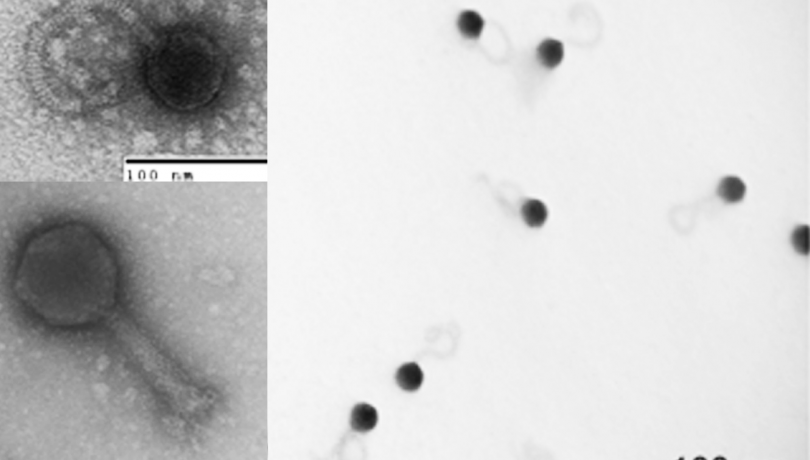The smallest type of ocean microorganisms, viruses, apart from very abundant, are much more diverse than previously thought and are mediators and modulators of oceanic biogeochemical essential functions, as shown by researchers of the Institute de Ciències del Mar a Barcelona, CSIC, in a study led by the Ohio State University (USA). The study is published today in the journal Nature.

The smallest type of ocean microorganisms, viruses, apart from very abundant, are much more diverse than previously thought and are mediators and modulators of oceanic biogeochemical essential functions, as shown by researchers of the Institute de Ciències del Mar a Barcelona, CSIC, in a study led by the Ohio State University (USA). The study is published today in the journal Nature.
The work has been possible thanks to the samples collected by the Tara Oceans and Malaspina-2010 expeditions that sailed the world studying the oceans. The researchers collected samples from the Atlantic, Pacific and Indian Ocean and the Mediterranean, from the surface down to 4,000 meters deep. From the samples collected, the viruses were concentrated and then bioinformatics tools were used to analyze their DNA.
"We have managed to reconstruct and build a gene catalog from a lot of different virus genetically clustered in groups that share similar properties," explains Simon Roux, postdoc at the laboratory of Professor Matthew Sullivan at the Ohio State University, who led the work. "The work does not only reveal a relatively complete catalogue of ocean viruses but also unveils new mechanisms by which the viruses could modulate greenhouse gases and energy fluxes in the oceans," said Matt Sullivan.
The work used the tools of bioinformatics and metagenomics to piece nucleic acid sequences as if they were a puzzle, to generate an ocean “viriome” of double-stranded DNA viruses that includes 15,222 viral populations that can be grouped in at least 867 groups with similar properties and very different from each other. "This triples the number of known ocean viruses" says Silvia G. Acinas, ICM researcher who participated in the two expeditions. "Of these 867 groups, 38 are abundant and include most of the ocean viruses. And two thirds of these populations are described for the first time in this study "
"These results serve to better understand the role of viruses in microbial food webs," says Dolors Vaqué, researcher and coordinator of the ICM research into virus in the Malaspina expedition.
Functional genes
Another interesting aspect is that in the genomes of viruses they have detected hundreds of functional genes that play a role in the biogeochemistry of the ocean. Probably these genes come from viral hosts and are being moved around to other hosts.
Each time a virus infects a cell in the ocean, in addition to the infection, it can contribute new genes to the infected cell. Thus, the viruses are "involved in the cycles of nitrogen and sulfur, probably by modulating the functioning of these cycles in the ocean," says Josep M. Gasol, research professor and coordinator of the ICM microorganism research in the Malaspina expedition.
"Only ten years it was unthinkable to be able to create this kind of catalog with samples obtained worldwide. Many researchers on microbes are describing how they affect our bodies, the soil, air and the oceans. As we increase our ability to study the viruses, we realize that they play an essential role in many functions of the microbial ocean. The tools developed in our laboratory are very useful to understand this, and the tools and the data presented will be essential for other researchers" said Matt Sullivan, coordinator of the study.
The catalog of ocean viruses presented in this paper in the journal Nature will be useful for the integration of viruses in ocean ecosystem models, and will underscore the essential role they play in nutrient cycles and marine food webs.
Paper:
Roux, S., J. R. Brum, B. E. Dutilh, S. Sunagawa, M. B. Duhaime, A. Loy, B. T. Poulos, N. Solonenko, E. Lara, J. Poulain, S. Pesant, S. Kandels-Lewis, C. Dimier, M. Picheral, S. Searson, C. Cruaud, A. Alberti, C. M. Duarte, J. M. Gasol, D. Vaqué, Tara Oceans Coordinators, P. Bork, S. G. Acinas, P. Wincker, M. B. Sullivan. 2016. Ecogenomics and potential biogeochemical impacts of uncultivated globally abundant ocean viruses. Nature doi:10.1038/nature19366
http://www.nature.com/nature/journal/vaop/ncurrent/full/nature19366.html